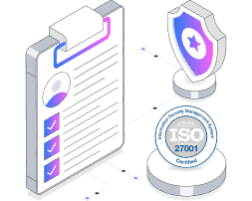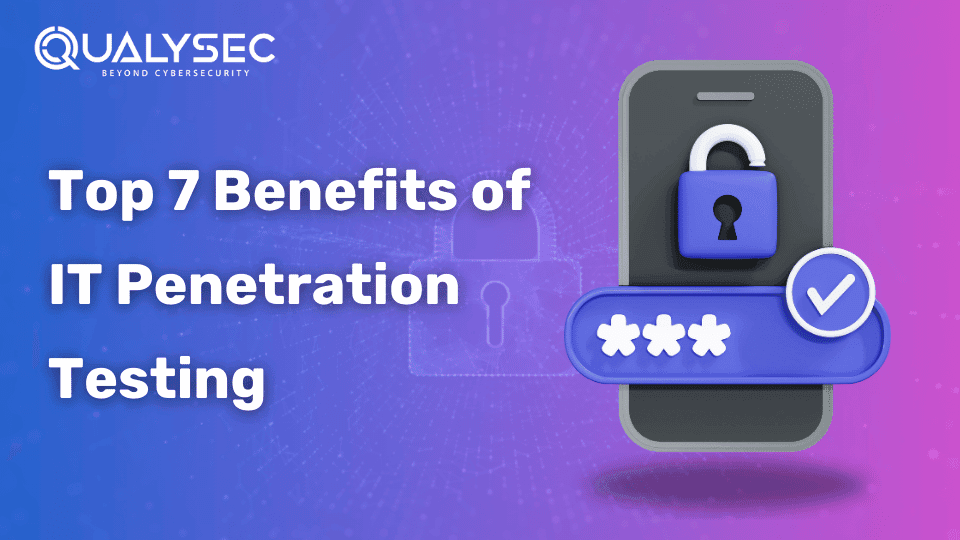Top IT Penetration Testing Provider in USA
More businesses are demanding the use of an IT penetration testing provider in USA than before. With companies relying more on technology, security is now a top priority. Penetration testing, also called pentesting, is used to find security weaknesses so enemies cannot use them. Today, we will give you a complete picture of IT penetration testing, its need in the USA, what to search for in a provider, and why Qualysec Technologies, with their unparalleled expertise, is considered the best in the industry. What is IT Penetration Testing? Pentesting, short for IT penetration testing, is when professionals try to hack your computer system using realistic methods and controls. An IT penetration testing provider aims to identify spots in the system that attackers might exploit. Testers conduct them on a range of assets, including web applications, smartphones, APIs, networks, cloud systems, and IoT devices. Using tricks and tools of real hackers, you can assess your company’s security accurately and realistically. Penetration testing is mainly carried out to determine if your existing countermeasures can detect and manage threats when they occur. As a result, you get recommended improvements and preventative measures to protect your assets from harm. Phases of Penetration Testing 1. Considering Objectives and Setting Parameters To begin, you must identify the systems, applications, or environments to test. It aligns everyone involved and creates a standard for legal and ethical guidelines. 2. Reconnaissance Also referred to as information gathering, this step aims to get information about IP addresses, any domain names, and the target’s server infrastructure. 3. Looking for and Gathering Elements In this step, testers find unsafe settings and possible entry points and open doors to prevent hackers from invading the system. 4. Exploitation Such professionals try to use any discovered flaws to access the system without permission or increase their privileges in the system, just as a real attacker would. 5. Reporting The team organizes the results into a report, noting every detected vulnerability, risk, and solution for handling each problem. The report helps reveal the issues and guides the process of fixing them. 6. Retesting Once the remediation process is complete, the team conducts another test to confirm all problems have resolved. Explore our recent guide on What are the 7 Phases of Penetration Testing? Why Is Penetration Testing Essential for U.S. Organizations? 1. Regulatory Compliance In the U.S., many companies must follow several security and data protection laws, including PCI DSS, HIPAA, NIST, and GDPR when handling EU data. Many of these systems must regularly undergo security assessments through penetration testing to ensure their cybersecurity is effective. A regular pentesting schedule with an IT penetration testing provider helps a business comply with regulations and prove to experts that proper actions are taken. If a company does not follow the rules, it could be fined, held legally liable, and lose its reputation. 2. Risk Management The first step in risk management is to know your weak points. Penetration testing attempts to mimic real-life attacks to identify areas where networks, applications, and systems are vulnerable. This proactive approach means organizations can find out their main risks and deal with issues in order of urgency according to the risks they pose. Preventing occurrences is often preferable in business than being reactive once a breach occurs, and penetration testing is a key part of this proactive strategy. 3. Protecting the Brand’s Career A minor security issue can cause customers to lose confidence in a company for years. Afterwards, negative coverage, additional regulation, and customer losses typically happen. Organizations use penetration testing to identify and solve issues in their system before cybercriminals can find and exploit them. If your organization is commits to cybersecurity, it builds trust among both customers and the industry you work in. 4. Implementing Measures to Maintain Business Activity Cyberattacks may result in interrupted tasks, poor service delivery, and extended downtimes. Identifying vulnerabilities in your network during penetration testing ensures the safety of crucial systems during attacks. Adopting this approach ensures you don’t stop services and helps you maintain your customers’ trust, securing your business activity. How to Do Penetration Testing 1. Planning and Establishing the Scope Initially, the team establishes the test’s objectives and the areas to test. The test determines which systems, networks, applications, and resources the team will check. The client and testing team choose when to conduct the test, set testing limits, and decide whether to perform tests with full visibility, without prior knowledge, or with limited accessible information. The client plays a crucial role by providing necessary information and access to the systems being tested. Keeping clear communication allows the team to focus on the business’s needs and legal requirements. 2. Collecting and Analyzing Information Once the final requirements are set, the IT penetration testing provider collects information about the target environment. During this step, also known as reconnaissance, there are passive and active ways to collect information. Researching domain registration data or workers’ profiles found online is passive reconnaissance, but finding and inspecting system vulnerabilities by scanning the network is considered active reconnaissance. The plan is to gather sufficient data to decide on the best strategy for the attack. 3. Vulnerability Analysis The team examines the collected information to identify any weaknesses. Using automated tools, manual processes, and commonly available threats helps testers highlight any problems in the system. Some examples include outdated software, insecure configurations, improper use of access permissions, and unprotected usernames and passwords. It provides the base for the phase where exploitation takes place. 4. Exploitation Now, the IT penetration testing provider will try to use the discovered vulnerabilities to access different parts of the system or its data. For example, you may use SQL injection, try to increase access to sensitive data, or create phishing tests. It is not meant to cause harm – instead, it acts out a scenario where your system could be infiltrated in the real world. The types of vulnerabilities that can be identified include software bugs, misconfigurations, and weak passwords. 5. Reporting





